On the day of the Great Victory. About Baltic submariners. W-408
But from the 44 U-type submarines that entered the battle with the enemy, we lost 31.
No matter how sad it is to state it, but in recent years, among many fans stories navy took root a certain "look down" on the actions of the Soviet submariners during the Second World War. They say that the tonnage was sent to the bottom of everything, which is especially noticeable on the background of the dizzying successes of the German U-bots in the battle for the Atlantic, while the losses were monstrous. Let's try to figure out why this happened, using the example of the Baltic “pike”.
The history of the creation of boats of this type originates in the 1928 year, when, under the guidance of B.M. Malinin's specialists from the NK and the Baltic Shipyard began the conceptual design of the submarine "for performing positional service in closed theaters." In those years, the once mighty Russian fleet was reduced almost to its nominal values; even our ability to protect Sevastopol or the Gulf of Finland in the Baltic was a big question. The country needed new ships, but there was practically no money, which made it necessary to give priority to light forces.
During the First World War, submarines demonstrated their combat power. No, no matter how powerful squadron could feel safe in the area where the submarines operated, and at the same time, the latter remained a relatively inexpensive means of naval warfare. Therefore, it is not surprising that the Navy of the Red Army paid close attention to the submarine fleet. And you need to understand that the "Pikes", in general, were not created by fighting ships on enemy communications, but by means of defense of their own shores - it was assumed that boats of this type would be able to manifest themselves as an underwater component of mine-artillery positions. And this entailed, for example, the fact that a long range for ships of this type was not considered a key characteristic.
The original concept of use was complemented by the desire to create the most simple and cheap submarine. This was understandable - the possibilities of Soviet industry and the financing of the USSR naval forces at the end of the 20s left much to be desired. The situation was complicated by the fact that the national school of submarine shipbuilding of tsarist times, alas, turned out to be very far from the world level. The most numerous submarines of the type “Bars” (single-hull, without compartments) turned out to be very unsuccessful ships. Against the background of the achievements of the British E-type submarines that fought in the Baltic, the successes of domestic submariners during the First World War looked extremely modest. In many ways, it is the fault of low combat and operational qualities of domestic boats.
However, during the Civil War, the Royal Navy lost one of its newest submarines in our waters - the L-55. Boats of this type were built as a development of the previous, extremely successful type E (so well-proven in the fight against the Kaiserlmarine), and a significant part of them went into service after the First World War. Subsequently, L-55 was raised and even introduced into the Red Army Navy - of course, it would be foolish not to take the opportunity to implement advanced foreign experience on the newest boat of the USSR.
As a result, the Pike, like the L-55, became a half-hull boat that had boolean ballast tanks, but, of course, the domestic boats were not traces from an English submarine ship. However, a long break in the design and creation of warships (and submarines in particular), together with the desire to make the ship as cheap as possible, could not have a positive effect on the combat qualities of the first Soviet medium submarines.
The first four “Pikes” (series III) were overloaded, their speed was lower than the design speed due to incorrectly chosen screws and not very successful hull shape, at the depth of 40-50 and horizontal steering wheels jammed, the time for draining tanks was absolutely unacceptable 20 minutes. It took 10 minutes to switch from economic to full underwater. Submarines of this type were distinguished by the constraint of internal location (even by the standards of the sub-alloy), the mechanisms turned out to be excessively noisy. Maintenance of the mechanisms was extremely difficult - in order to inspect some of them, it was necessary to spend several hours disassembling other mechanisms that impede inspection. Diesels were capricious and did not give out full power. But even if they had given out, it was impossible to develop the full course anyway due to the fact that, at a power close to the maximum, dangerous oscillations of the shafts occurred - this disadvantage, alas, could not be eradicated in the later series “Schuk”. The discrepancy between the capacities of electric motors and the battery led to the fact that at full speed the latter heated up to 50 hail. The lack of fresh water to fill up the batteries limited the autonomy of the 8 Schuk for days against the design twenty, and there were no desalination plants.
Series V and V-bis (built 12 and 13 submarines, respectively) became “work on the bugs”, but it was clear that the fleet needed a different, more advanced type of average submarine. It must be said that even in 1932 g (and it is possible that even before the tests of the head Pike of the III series), the development of the Pike B project began, which should have significantly higher TTX than expected when designing the " U.
Thus, the full stroke speed of the Pike B should have been 17 or even 18 knots (surface) and 10-11 knots (underwater) against 14 and 8,5 knots of the Pikes, respectively. Instead of two 45-mm semi-automatic 21-K "Pike B" should have received two 76,2-mm guns (later stopped on 100-mm and 45-mm), while the number of spare torpedoes increased from 4 to 6, and also increased the range . Autonomy should be brought to 30 days. At the same time, there was a great continuity between the “Pike B” and the old “Pike”, since the new boat was to receive the main mechanisms and part of the “Pike” systems in an unchanged form. For example, the engines remained the same, but to achieve greater power, the new boat was made three-shaft.
The operational and tactical mission for the new boat was approved by the Chief of the Naval Forces on 6 in January 1932, and a little more than a year later (25 in January on 1933 g), its draft, which reached the stage of working drawings, approved the Revolutionary Military Council. But nevertheless, ultimately, it was decided to go another way - to continue to improve the “Pike” mastered by the industry and at the same time to get the draft of the new middle boat abroad (in the end, this is how the C type submarine appeared)
Many of the drawbacks of the "U" type boats were eliminated in the V-bis-2 series (14 boats), which can be considered the first full-fledged warships of the series. At the same time, the identified problems (where it was possible) were also eliminated on the boats of the early series, which improved their fighting qualities. Following the V-bis-2, the 32 submarines of the X-series and 11-X-bis series were built, but they did not have any fundamental differences from the ships of the V-bis-2 project. Unless the boats of the X series differed in a special, easily recognizable and, as it was then called, “limousine” form of the superstructure - it was supposed that it would reduce the resistance of the ship when moving under water.
But these calculations were not justified, and the superstructure was not very user-friendly, so in the X-bis series, the shipbuilders returned to more traditional forms.
On the whole, the following can be stated: submarines of the "U" type are by no means a great success for domestic shipbuilding. They did not fully comply with the design TTX, and even the “paper” characteristics already in 1932 g were not considered sufficient. By the beginning of the Second World War, boats of type "Sh" obviously outdated. But at the same time, in no case can one underestimate the role played by submarines of this type in the development of the domestic submarine fleet. On the day of the laying of the first three “Pikes” of the III series, present at this event, namorsi R.A. Muklevic said:
And this, no doubt, was absolutely true, and besides, a large series of the first domestic medium-sized submarines became a real “forge of cadres” - a school for many, many submariners.
Thus, to the Great Patriotic War, we had, though not the best in the world and already outdated, but still combat-ready and rather menacing ships, which, in theory, could put a lot of blood to the enemy. However, this did not happen - the tonnage of the enemy vessels sunk by the "pikes" is relatively small, and the ratio of success and losses drives melancholy - in fact, we paid for one enemy ship destroyed by this type of submarine. Why did this happen?
Since today we are writing specifically about the Baltic submariners, let us consider the reasons for the relative failure of the “pike” in relation to this theater, although some of the reasons below, of course, also apply to the submarine forces of our other fleets. So, the first of these is the explosive growth of the Red Army Navy in the mid-to-late 30-s, when a small before-naval force literally fell upon a stream of dozens of warships, in many respects fundamentally different from the techniques of the First World War, which, for the most part, our fleet was armed. There was no reserve of highly qualified naval officers in the country, it was of course impossible to quickly prepare them, so we had to upgrade those who had not yet mastered the previous position. In other words, the Navy of the Red Army experienced the same growth illness as the Red Army itself, only the fleet suffered from it even more, because the warship is not even a tank, but much more complex and specific equipment, the effective operation of which requires the coordinated efforts of many highly qualified officers and sailors.
The second reason is that the Baltic Fleet was in a situation that could not be predicted, and which no one had expected before the war. The main task was considered to be the defense of the Gulf of Finland, in the model and likeness of how the Russian Imperial Fleet did it in the First World War. But who could have imagined that already at the very beginning of the war both Finnish shores would be captured by enemy troops? Of course, the Germans and Finns immediately blocked the exit from the Gulf of Finland with mines, aviation and light forces. According to some reports, already in 1942, enemy minefields totaled more than 20 thousand mines and mine defenders, this is an enormous amount. As a result, instead of defending a strong mine-artillery position in accordance with pre-war plans and exercises (and even the Hochsefleft, which at that time was the second fleet of the world), the Baltic Fleet had to break through it in the Gulf of Finland throughout the First World War to enter the operational space.
The third reason is, alas, the reduction of intensive combat training soon after the start of World War II. But if in the same Port Arthur we can “thank” Governor Alekseev and Rear Admiral Vitgeft for the lack of regular exercises, then blaming the lack of proper training during the Great Patriotic War would be wrong for the command of the Baltic Fleet - I wonder where would take the necessary resources for it in besieged Leningrad? But, for example, the first Baltic "Pikes" of the latest and most advanced series of X-bis were in operation since 7 June 1941 of the year ...
And finally, the fourth reason: in the current situation, neither the fleet, nor the army, nor the Air Force had enough funds to support the activities of submarines. The Germans and the Finns had built the Baltic defense echelon, and the fleet locked in Kronstadt with a minimum of resources had no way to hack it.
Assessing the actions of one kind or another or type of troops, we, alas, often forget that no Tanks, artillery, aircraft or warships do not operate in a vacuum. War is always a complex interaction of diverse forces, and therefore, for example, it makes no sense to compare the successes of Soviet and German submariners “head-on”. Undoubtedly, the German sailors received better training than the Soviet, and the submarines that Germany fought had much better performance characteristics than the Pike (in fact, they were designed much later). But you need to understand that if the brave guys from the kriegsmarines were in the conditions in which the Soviet Baltic submariners had to fight, the enchanting millions of tons of tonnage sunk in the Atlantic would have only dreamed of them, and not for long. Because the conditions of the underwater war in the Baltic did not have a longer life.
The first, and perhaps most important, which, alas, the Baltic Fleet did not have was aviation of sufficient strength capable of establishing at least temporary air supremacy in water areas. This, of course, is not about aircraft carriers, but without a sufficient amount of aircraft capable of “working” on the waters of the Gulf of Finland, the withdrawal of minesweepers and cover ships for breaking through minefields became excessively risky. Our aircraft could not crush the light forces of the Finns and Germans, freely operating in Finnish. At the same time, the fleet was unable to conduct regular air reconnaissance of the Baltic Sea, and, accordingly, had the most vague idea of both the German transport routes and the minefields covering them. In essence, our submariners were forced to go blindly to the full power of the German antisubmarine defense. And what did it lead to?
The boat Shch-304 received an order to patrol the throat of the Gulf of Finland, and then - to move to a position in the area of Memel Vindava. On the night of 5 in November 1941, the commander U-304 reported on the arrival to the position and more than the boat did not contact. Much later, it turned out that the position of U-304 was assigned to the northern section of the German Apolda minefield. And this, alas, is not an isolated case.
In general, it was the mines that became the most terrible enemy of our Baltic submariners. And the Germans and Finns mined everything that is possible and what is impossible - in two layers. The Gulf of Finland and exits from it, the possible routes of our submarines along the island of Gotland, but not only there - the approaches to its transport routes were covered with minefields. And here's the result - from the 22 submarines of the type “U”, which the Baltic Fleet had (including those that entered service after the start of the war), 16 died during the hostilities, 13 or even 14 “mined” them. Four dead in the mines "Pikes" simply did not have time to go into combat positions, that is, they never attacked the enemy.
The German submariners, raiding in the ocean, had a good idea of the routes of the transatlantic convoys. They were almost not threatened by mines (except, perhaps, in some sections of the routes, if they were near the British coast), and former airliners that became Focke-Wulf 200 long-range maritime reconnaissance aircraft found convoys and directed them to wolf packs.
German boats pursued convoys on the surface, taking advantage of the fact that the speed of the transports was relatively low, and when it grew dark they approached and attacked. All this was risky, and, of course, the German submariners suffered losses, but they also delivered terrible blows to the enemy’s shipping. Then, radar and escort aircraft carriers put an end to surface attacks (now moving for the caravan "wolf pack" could be detected long before it could get close to the convoy), and the combined efforts of the base and deck aircraft put an end to the raids of German heavy aircraft in the Atlantic. Then the Germans were forced to go to the actions "blindly" - only submarines against the entire PLO system of the trans-Atlantic convoys. Effects? Enchanting successes are gone, and the Germans began to pay one submarine for each sunk transport. Of course, it can be said that the defense of the Allied convoys has become many times more powerful than the Baltic shipping guard that the Germans and Finns deployed in the Baltic, but it should be borne in mind that the German submariners did not fight on Shchuks, but on much more perfect ships. In addition, the Atlantic Ocean did not have many shoals, shallow water areas and mines.
Yes, the Pikes were not the best submarines in the world, and their crews lacked training. But with all this, boats of this type entered service since the 1933 year, so that the fleet has accumulated considerable experience in their operation. It is difficult to say for sure, but it is possible that with all the above-mentioned problems and shortcomings of all our submarines at the beginning of the war, it was the “Pikes” that were the most combat-capable. And the people who served on them were ready to fight the enemy to the end.
Usually, on the eve of 9 in May, we remember the heroes, whose actions inflicted heavy damage on the enemy, thwarted his plans in one way or another, or ensured successful actions of our troops, or saved someone. But in this article we will risk moving away from the template. We will recall the first combat campaign of the submarine U-408. Which, alas, was the last for our "pike".
At one o'clock in the morning 19 in May 1943 Shch-408, accompanied by five patrol boats and seven minesweepers, went to the diving area (East Gogland reach, 180 km west of Leningrad). Then the boat had to act independently - it had to force the enemy areas of the PLO and go to the position in Norrköping Bay - this is the area of the coast of Sweden, south of Stockholm.
What happened next? Alas, we can only guess with some degree of certainty. Usually, in publications it is indicated that the boat was attacked by an aircraft that damaged it, and then light German forces “swooped in” on the oil trail on U-408. But most likely (and taking into account the German and Finnish data) the events developed as follows: two days later, on May 21, 13.24 U-408 was attacked by a German seaplane, which discovered it on an oil trail and dropped two depth charges on U-408. Where did the oil trace come from U-408? It is possible that the boat received some kind of malfunction, or some kind of breakdown occurred, although it cannot be ruled out that the German plane attacked something that had nothing to do with U-408. On the other hand, already after an hour and a quarter of 2 (15.35) our boat was attacked by a Finnish aircraft, which also dropped depth charges on it, and the oil mark was again indicated as a unmasking attribute. This suggests the presence of some kind of breakdown on U-408.
Perhaps it was like that. U-408 was fatally unlucky from the very beginning of combat service. Four days after the end of the test, 26 September 1941 g, the boat collided with the networker “Onega”, receiving damage that required factory repair. The ship was repaired, but 22 of June 1942, when U-408 was in the Admiralty plant's bucket, two German projectiles fell into it, again causing heavy damage to the ship. One compartment was flooded, and W-408 rested stern into the ground, having a roll in 21 hail. It was repaired again, and by October 1943, the ship was ready to go to sea, but then again the heavy projectile exploded next to Shch-408 and the fragments pierced the durable hull ... The boat again got in for repair.
What was the quality of this repair? Recall that it happened in besieged Leningrad. Of course, in the 1943, the worst thing is the blockade winter 1941-1942. was already behind. Mortality sharply declined: while in March 1942 100 people died in the city, in May 000 50 people already died, and in July, when U-000 was repaired again, 408 people.
Just for a second, imagine what is behind these “optimistic” numbers ...
But back to U-408. Exhausted, exhausted, starving to death workers could easily make some kind of mistake, and the post-repair tests, if they were, were clearly being whipped up and unlikely in full. So it is likely that during a long underwater transition something went out of order and a leak of oil appeared, which became the cause of the finding of U-408.
However, this is only guesswork. Be that as it may, but less than an hour after the attack of the Finnish aircraft, in 16.20, three German high-speed German barges - BDB-188; 189 and 191 - approached the location of the boat. They dropped 408 depth charges on the U-16. Our Pike did not receive any damage, but ... The fact is that after a two-day transfer, the batteries were discharged, they had to be recharged. To do this in the presence of enemy ships and aircraft, of course, was not possible, but with empty batteries, the boat could not tear itself away from the forces pursuing it.
Thus, the crew was in a stalemate. U-408 tried to escape from prosecution, but - unsuccessfully, the Germans continued to search for the boat and dropped 21.30 depth charges on it in 5. It became clear that the Germans from the area of the location of U-408 will not leave.
Then the commander of Shch-408, Pavel Semenovich Kuzmin, made the decision: to surface, and to give artillery battle. It was brave, but at the same time and reasonable - being in the surface position the boat was able to use the radio station and call for help. At the same time, at night there were more chances to break away from the forces pursuing the boat. Therefore, at about two o'clock in the morning tentatively (perhaps later, but not later than 02.40-02.50) Shch-408 surfaced and engaged in battle with the German BDB, as well as, apparently, by the Swedish patrol boat “VMV-17”.
The forces were far from equal. Each BDB was armed with a very powerful 75-mm gun, as well as one or three Oerlikon 20-mm automata, and a Swedish patrol boat with one Orelikon. At the same time, U-408 had only two 45-mm 21-K semi-automatic. However, the word "semi-automatic" should not be misleading, the whole X-NUMX-K semi-automatic was that the shutter after the shot opened automatically.
Further descriptions of the battle vary greatly. According to the generally accepted version, "Schuku" in the artillery battle destroyed two enemy patrols and died with the whole crew, without lowering the flag. However, after the war, no proof of the death of at least one ship was found in the Finnish and German documents, and, frankly, it is doubtful that U-408 could achieve such success. Unfortunately, the fighting qualities of 45-mm 21-K "semi-automatic" shells were frankly small. Thus, the high-explosive OF-85 contained a total of 74 grams of explosive. Accordingly, in order to destroy even a small ship, it was necessary to provide a huge number of hits. For example, during the Soviet-Finnish war, to sink the Estonian vessel Kassari (379 brt) W-323, the 152 projectile had to be spent — the exact number of hits is unknown, but probably the vast majority fell, as the ship was shot almost in polygon conditions . By the way, the high-explosive projectile of the German 7,5 cm Pak. 40, which was armed with BDB, contained 680 grams of explosive.
According to others, the gunners U-408 did not sink, but damaged the enemy's 2 ship, but there may have been some confusion. The fact is that after the battle, the German BDB did not understand, fired at the Finnish patrol boat “VMV-6” coming to support them, and the splinter of one projectile boat was damaged - perhaps later, these damages were attributed to 408.
Most likely, this was the case - W-408 surfaced and entered into battle with the enemy ships. It is known that in 02.55 and 02.58 in the headquarters of the Baltic Fleet were obtained radiograms:
Vayndlo is a very small, barely noticeable island on the map, located about 26 miles from Gogland, and the distance from Leningrad (in a straight line) is about 215 kilometers.
In the artillery battle that ensued, the Germans (in their opinion) achieved four hits of 75-mm shells and a large number - 20-mm. The boat responded with several hits in the BDB-188, one of them struck the German ship in the wheelhouse. In any case, it is reliably known that the battle of the German ships against U-408 was not a game with only one goal - the submarine gunners managed to cause damage to the enemy.
And then ...
Fortunately, among us there are not indifferent people who are ready to waste time and energy on solving the mysteries of the not-so-distant past. There is a project “Bowing to the ships of the Great Victory”, in which a group of divers searches for dead ships and dives to them. And so, on April 22, an underwater search expedition in which, in addition to our compatriots, a group of Finnish divers SubZone took part, discovered the remains of the submarine U-2016, and then performed descents to it. This expedition allowed to shed light on the circumstances of the last battle and the death of our "Pike". The fact that the divers saw, told one of the project participants, Ivan Borovikov:
The Finns who participated in the battle said they saw artillery hits in the boat, saw how the Shch-408 artillery crews died and were replaced by other people. The picture that we saw at the bottom corresponds to the battle description given by the Finnish side.
In this case, we did not see serious damage to the hull of the boat. Apparently, strikes on the "U-408" using depth charges did not cause her serious damage. All hatches were closed, and the crew, apparently, until recently fought for the survivability of the boat. "
On the question of whether the boat sank as a result of enemy artillery fire, or whether the survivors dive, Ivan Borovikov replied:
We will never know what 23 really happened on May 1943. But most likely, this is what happened: after a fierce battle, the crew of Shch-408 suffered heavy losses. Most likely, the commander of the boat, Pavel Semenovich Kuzmin died in battle - PPSh, which he was obliged to take with him, leaving the bridge, and today lies on him, and near the place where the commander should be - a hole from an 75-mm projectile. Alas, it was impossible to break away from the enemy, but there was no help.
Those who remained alive faced a difficult choice. It was possible to fight to the last, as long as the ship still maintains buoyancy. Yes, in this case, many would have died, but the death from an enemy projectile or splinter in battle is a quick death, and besides, part of the crew probably would have survived. In this case, UH-408 was guaranteed to die, prisoners who escaped from it were expected to be captured, but at the same time those who survived the battle would have survived. They have absolutely nothing to reproach themselves for, because they fought to the extreme. Descendants would have admired their heroic deed.
But there was a second option - to dive. In this case, there was some chance that the command of the Baltic Fleet, having received a radiogram-call for help, would take appropriate measures and drive away enemy ships. And if you can wait for help, if the boat is (despite numerous hits) capable of ascent, then U-408 can be saved. Moreover, during the battle it was impossible to assess the damage of U-408, it was impossible to understand whether the submarine would be able to resurface after a dive or not. It was clear only one thing - if help does not come, or even comes, but fails to emerge, then each of those who survived the artillery battle will face a dreadful, painful death from suffocation.
The third option - to lower the flag and surrender to the enemy, for these people simply did not exist.
We will never know which of the submarine officers commanded at that moment when it was necessary to make a terrible decision, but it was made. U-408 went under water. Forever and ever.
The Germans and the Finns were afraid to miss the prey. BDB, patrol boats, a Finnish minelayer approaching continued to patrol the Pike dive area, periodically dropping depth charges. Meanwhile, her crew strained their last forces in an attempt to repair the damaged boat. Already in the late afternoon on May 23, enemy hydroacoustics recorded sounds that were regarded as an attempt to blow through the cisterns, and it probably was in fact the case. It is known that the boat was submerged with a stern trim, but at the same time the participants of the 2016 expedition of the year found that the Pike stern (at the waterline gone into the ground) was raised. This indicates an attempt to blow the feed ballast tanks - alas, the damage of the Shch-408 turned out to be too great for the boat to float.
From about 17.00 on May 24, noises from W-408 were no longer heard. It was all over. “Pike” forever rested at the depth of the 72 meter, becoming a mass grave for the 41 member of her crew. But the Finnish and German ships remained in place and even dropped several depth charges. Only the next day, May 25, finally making sure that the Soviet submarine did not emerge, they left the area of her death.
And what about the command of the Baltic Fleet? Upon receiving the Shch-408 radiogram, eight I-16 and I-153 planes flew to Waindlo with Lavensari, but they were intercepted by the enemy and, having lost two cars, returned back without completing their combat mission. The next attempt was made only after 8 hours - this time the La 5 took to the aid of the dying "Pike", but they, having lost two cars, failed to get through to the place of the tragedy.
U-408 died in the first combat campaign. The boat never went into a torpedo attack, could not destroy a single enemy ship. But does this mean that we, admiring the achievements of the German submariners, should shamefully forget how our crew fought and died? How did the crews of our other submarines die?
PS From the findings of the expedition "Bow 2016":
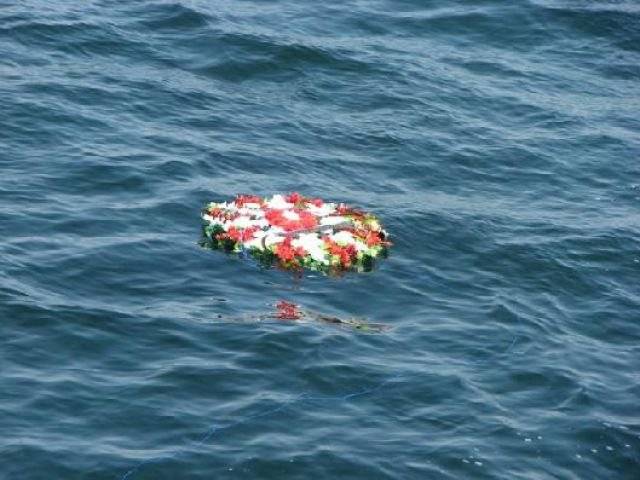
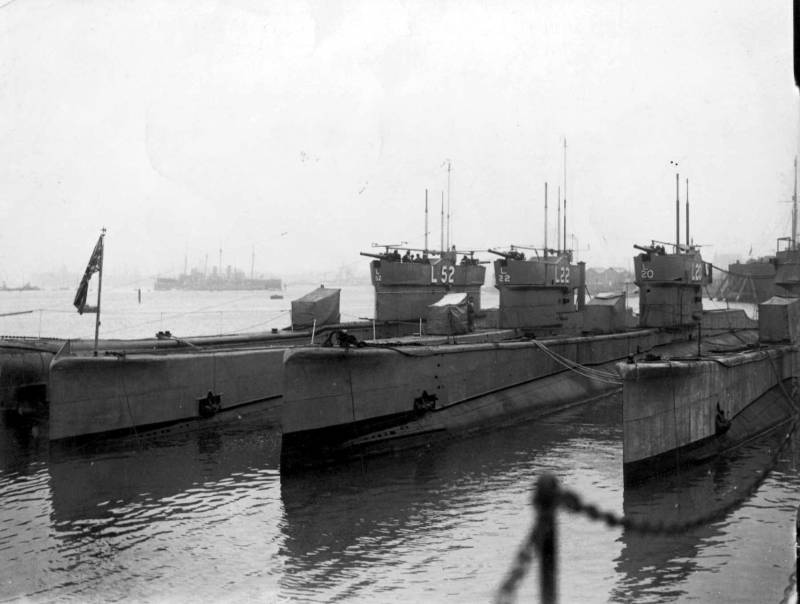
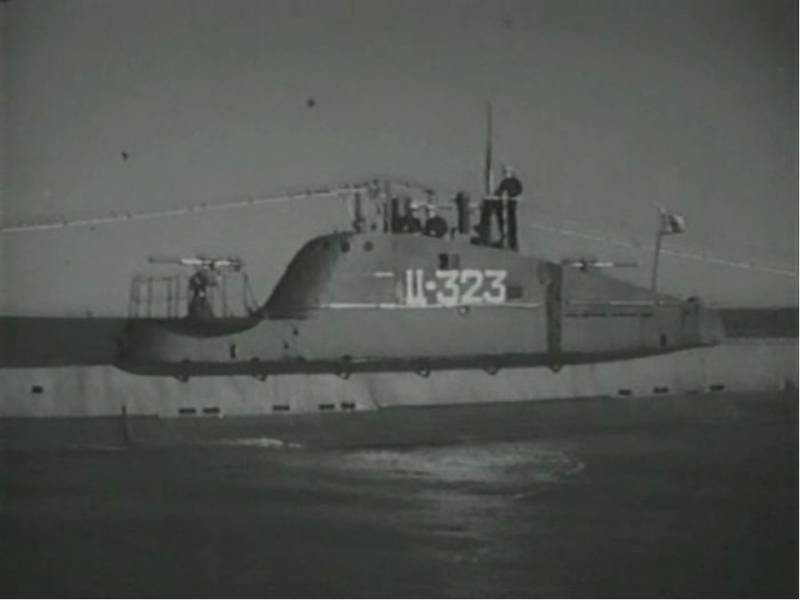
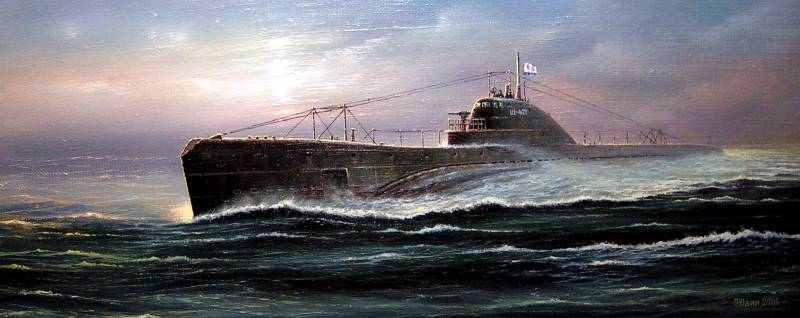
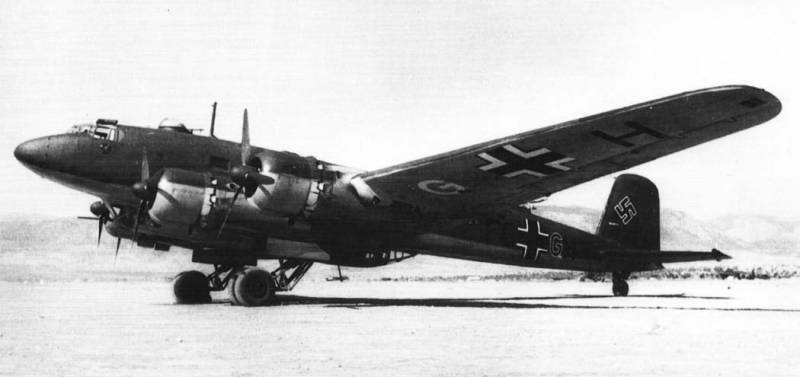
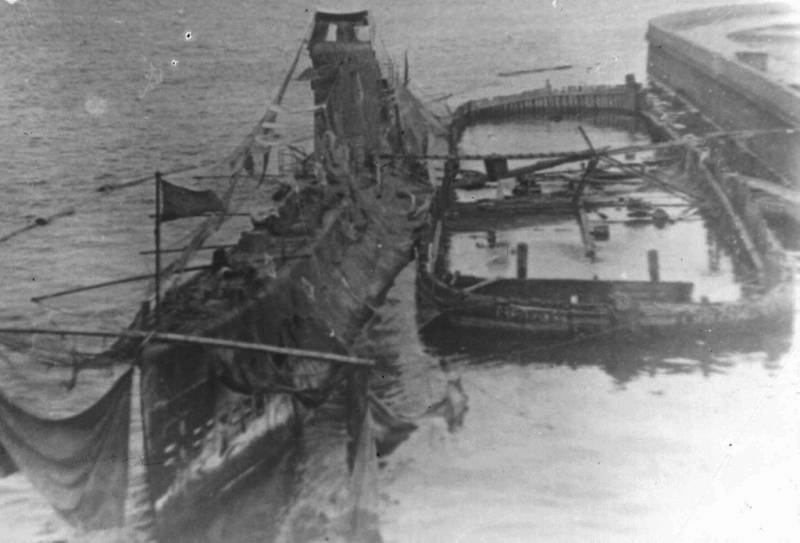
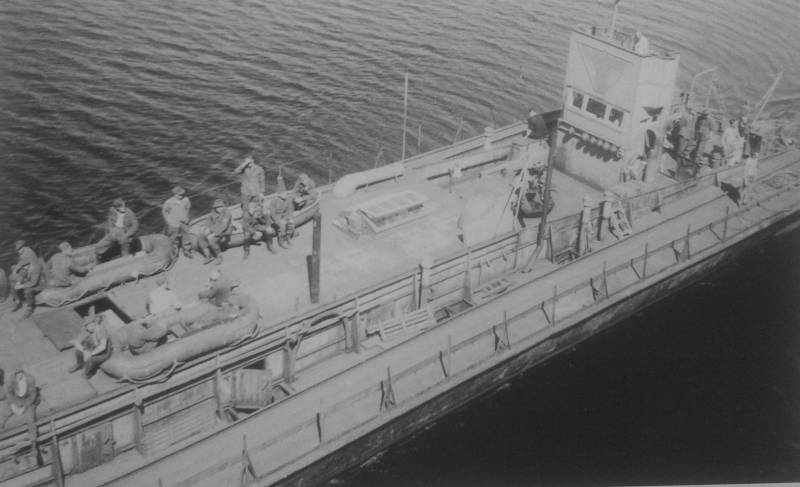
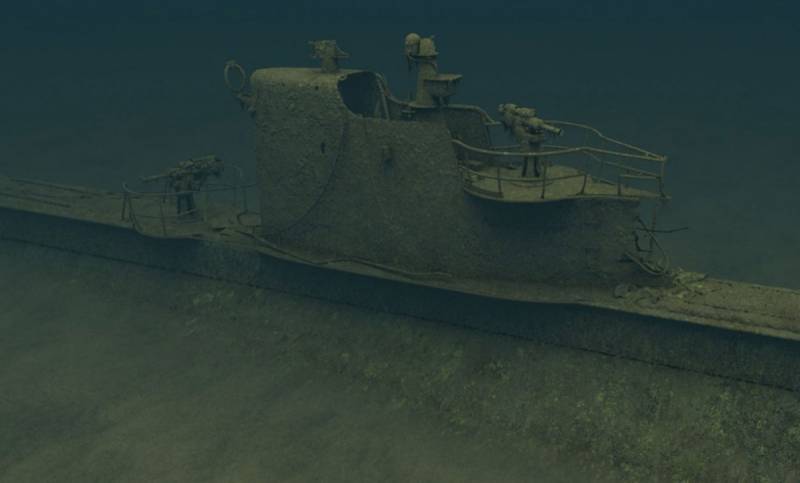
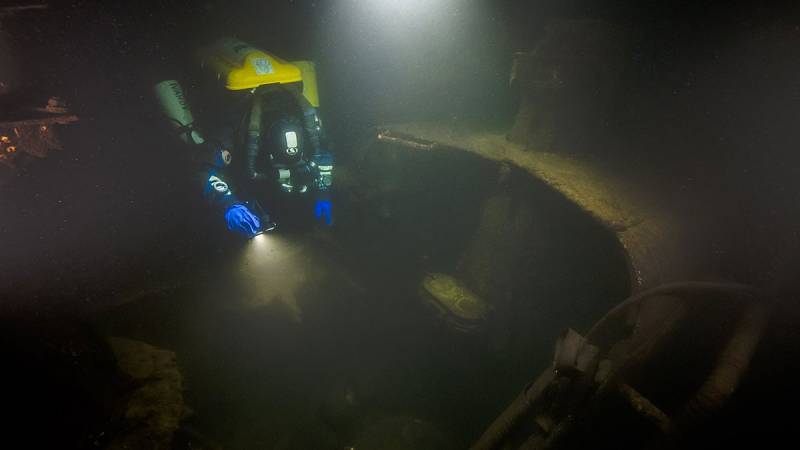
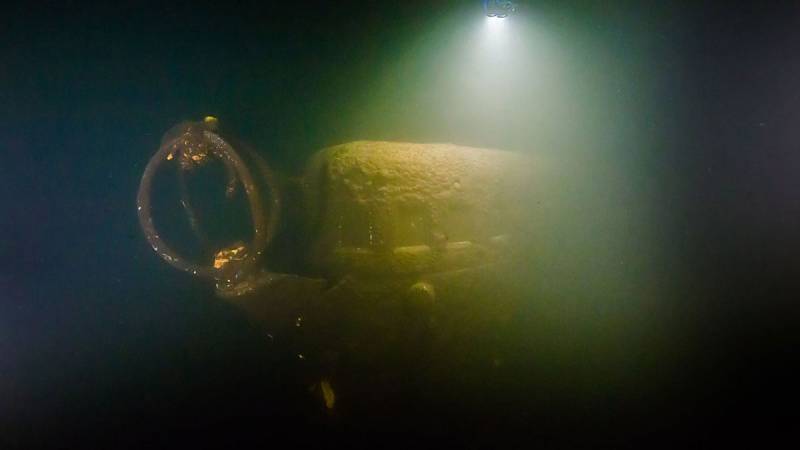
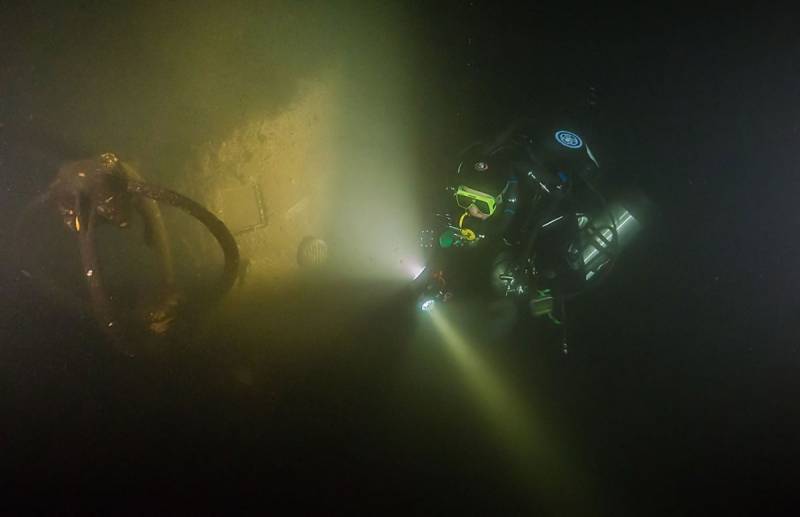
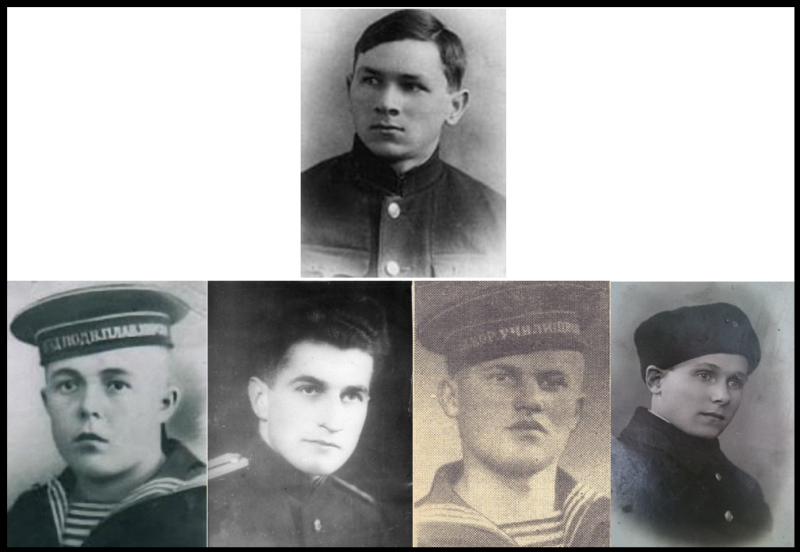
Information